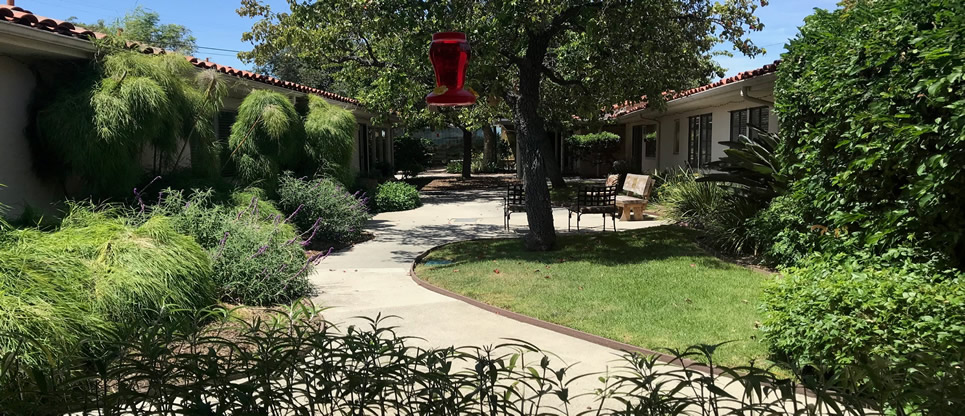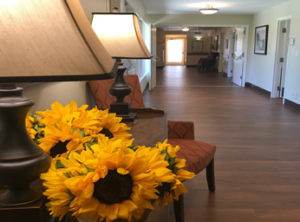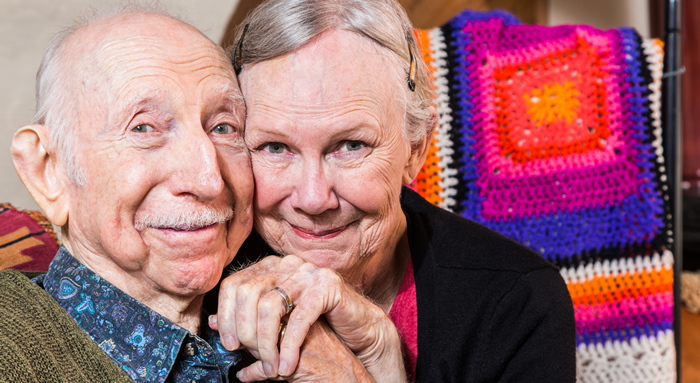 Difficult Behaviors in Dementia:
Difficult Behaviors in Dementia:
How to Keep Patients Safe and Caregivers Sane
by Luciana Mitzkun Weston,
Villa Alamar Community Services Director
Part one:
Identifying Difficult Behaviors
At times, people living with Alzheimer’s or other forms of dementia act differently than what would be considered their normal behavior. Whether it be expressions of frustration and stubbornness in the beginning stages of the disease, or resistance to care and agitation in later stages, some changes in behavior should be expected.
Dementia often causes patients to experience confusion in relation to place and time, what to do next, and what others expect of them in social situations. Confusion leads to an increase in feelings of fear and anxiety, which in turn causes a patient to exhibit difficult behaviors. Caregivers are often puzzled and bewildered by these troublesome behaviors.
Some of these behaviors are perplexing, but harmless. Caregivers may even find it amusing when their loved ones start tearing page after page out of magazines and folding them multiple times into increasingly smaller pieces, until they can no longer be folded; some patients move items around the house, continuously rearranging and moving them again; some patients enjoy bursting the bubbles on packing materials, or watching the same TV show over and over again.
Dementia patients find such repetitive actions to be soothing and can continuously engage in performing them for countless hours. Although some of these behaviors can constitute an annoyance to their loved ones, they are merely a manifestation of a patient doing what simple task he can to entertain himself.
If the behavior is not harmful to the patient or others and can be performed without major disruptions to the household, it should not be discouraged. Ensuring that the patient has a safe and comfortable space for himself to engage in the chosen behavior is the best strategy in this case. Harmless behaviors, although sometimes annoying to caregivers, should not be considered a difficult behavior, but rather seen as an “activity.” Activities are desirable: They keep the person at ease, engaged, and centered in the moment.
On the other hand, some behaviors can pose a risk to the patient’s wellbeing, disrupt the functionality of the household, or interfere with the caregiver’s ability to provide care. Behaviors such as shuffling and moving furniture, dismantling and disassembling electronics, wandering and getting lost in the neighborhood, picking at one’s own skin to the point of creating open sores, or screaming and yelling at odd hours, are certainly behaviors that call for intervention as well as an increase in the patient’s supervision. Such behaviors can pose a risk to the patient’s and caregiver’s health, and significantly decrease the caregiver’s ability to provide care.
As a general rule:
If the behavior is harmful to the patient or others or
if the behavior interferes with the caregiver’s ability to provide care,
it should be considered a “difficult behavior.”
We should also consider that what we define as a difficult behavior is often a manifestation of some form of stress or discomfort: Your loved one may be over- or under-stimulated, may be in some form of pain (physical or emotional) or may be suffering from depression or anxiety, or even in some cases, be afflicted with an infection or other health condition. Look for the underlying cause. While the behavior itself deserves attention, the cause behind it requires proper investigation and care (we will address these strategies on Part III of this article).
Difficult behaviors in dementia patients are the primary reason caregivers seek Villa Alamar’s memory care services. Indeed, most residents do experience an improvement in the frequency and severity of difficult behaviors after transitioning to Villa Alamar.
This improvement is made possible by the many dementia supportive strategies we have adopted in our community. The environment itself makes a big difference to the residents’ ability to conquer confusion and achieve enjoyment in daily activities. Having freedom to safely stroll indoors and outdoors through patios and paseos, having access to nature (trees, sounds, smells, birds), receiving encouragement to participate in programs that are designed to be achievable, meaningful, and fun for the resident, and having experienced and kind caregivers always close and ready to provide assistance: All these strategies work to suppress confusion and promote wellbeing and social interaction. Less confusion generates lower anxiety levels and reduced urge to act in difficult or inappropriate ways. In the right environment, with careful and consistent stimulation, dementia patients thrive!
Family caregivers can adopt many of these strategies in their own homes to help reduce the occurrences of difficult behaviors and to extend their ability to care for their loved ones in place.





